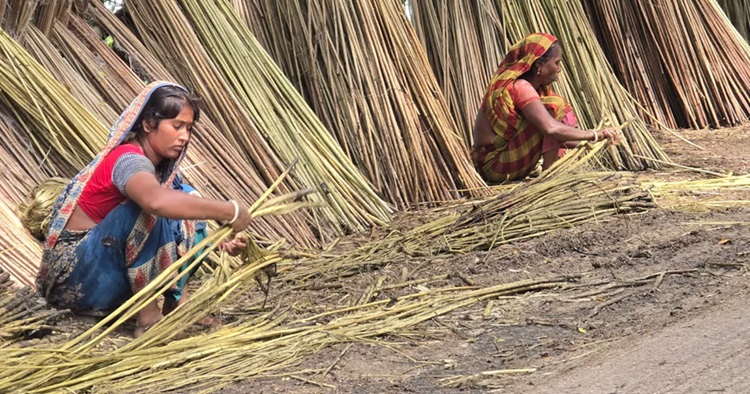Golden fibre glows again; Faridpur fields promise Tk 2,000cr harvest


Weeks of worry over water scarcity have given way to a renewed hope, as timely monsoon rains ease retting woes and raise prospects for a bumper jute harvest in Bangladesh’s jute heartland.
This season, more than 86,500 hectares of land in the district have been brought under jute cultivation. Agricultural officials now expect production to surpass two lakh metric tonnes, with a market value exceeding Tk 2,000 crore.
Faridpur, a central district with an agriculture-based economy, has recorded a relatively good yield this season despite soaring production costs.
Farmers note that expenses have multiplied, especially due to the absence of early rainfall, which forced many to depend on irrigation to sustain their crops.
Jute has been cultivated in eight of the district’s nine upazilas, with Charbhadrasan upazila being the only exception.
Surrounded by major rivers like the Padma, Arial Khan and Madhumati, Faridpur is naturally suited for jute cultivation thanks to its fertile land and favourable climate.
According to the Department of Agricultural Extension (DAE), over 75% of Faridpur’s arable land is currently dedicated to jute cultivation, engaging more than five lakh farmers directly and indirectly.
During a recent visit to Saltha and Nagarkanda upazilas, this UNB correspondent observed bustling activity in the fields.
Farmers were busy harvesting, bundling stalks for retting, and washing and drying the fibre after stripping it. Similar scenes played out in Boalmari and other upazilas across the district.
Farmers reported that yield was poorer in low-lying lands due to waterlogging, while higher ground saw comparatively better results. They also highlighted a significant increase in production costs this year due to delayed rains.
Saiful Islam, Nurul Islam and Delwar Hossain, three farmers from Saltha, said it now costs nearly Tk 4,000 to bring one maund (approximately 37 kg) of jute to market.
“So how can we survive unless we get at least Tk 5,000 per maund?” they questioned.
Still, the farmers remain hopeful. The timely rainfall during the harvesting period has facilitated retting, resulting in good colour and fibre quality—factors that could fetch better prices at the market.
Md Anwar Hossain, Faridpur Sadar Agriculture Officer, noted that the district’s alluvial sandy-loam and clay-loam soil, coupled with a warm and humid climate, make it ideal for growing jute.
“That’s why Faridpur leads in national jute production and is rightfully called the ‘Jute Capital’,” he said.
Md Shahaduzzaman, Deputy Director of the DAE in Faridpur, said the recent heavy rainfall during retting will enhance the fibre quality, adding, “We expect fair market prices.”
He also estimated that this year’s jute output could exceed two lakh metric tonnes, valued at more than Tk 2,000 crore.
